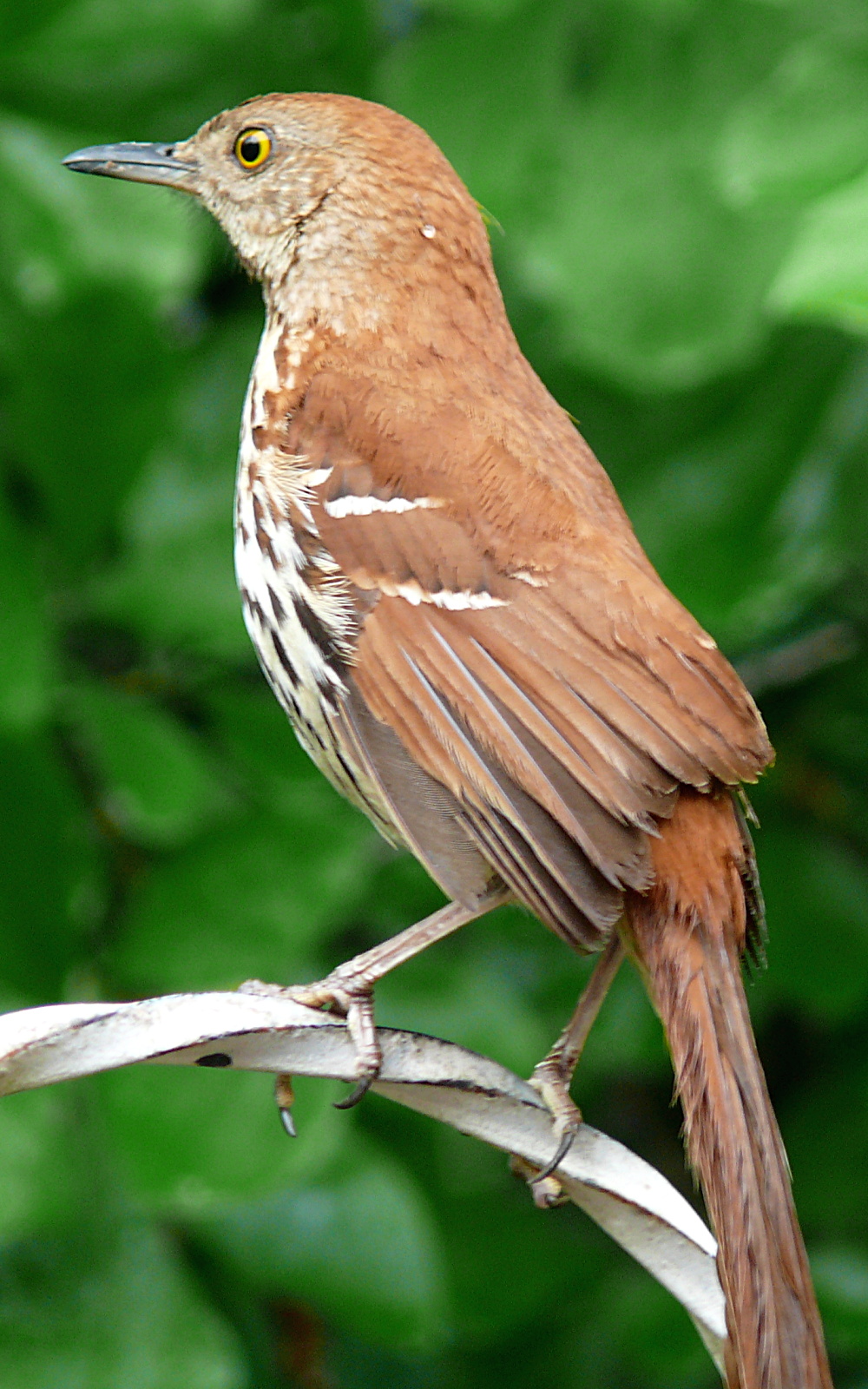California Thrasher
(Toxostoma guttatum)

Description
Toxostoma guttatum, commonly known as the California Thrasher, is a bird species found in the southwestern United States and Baja California in Mexico. With its unique physical features and behaviors, the California Thrasher is a fascinating bird species that has captured the attention of bird enthusiasts and researchers alike. Physical Description The California Thrasher is a large, long-tailed bird with a length of about 30 cm and a wingspan of approximately 40 cm. It has a distinctive long, curved beak that is used for probing the ground for insects and other invertebrates. The California Thrasher is a drab-colored bird with brownish-gray plumage on its upper parts and a lighter gray or buff-colored underbelly. The tail is long and rounded, and the legs and feet are dark brown. Habitat and Distribution The habitat of Toxostoma guttatum, commonly known as the California Thrasher, includes chaparral, oak woodlands, and sagebrush scrublands. It is also found in urban and suburban areas with suitable vegetation cover. The range of the California Thrasher extends from the southwestern United States, including California, Arizona, and Nevada, to Baja California in Mexico. Within this range, the bird can be found in a variety of habitats, as mentioned above. It is a non-migratory bird and tends to stay in its range year-round. Behavior and Diet The California Thrasher is a solitary bird that is often heard but rarely seen. It is a shy and secretive bird that spends much of its time on or near the ground, foraging for insects, spiders, and other invertebrates. It uses its long, curved beak to probe the ground and leaf litter for prey. The California Thrasher is known for its unique behavior of using its beak to toss aside leaves and other debris to uncover prey. This behavior is called "leaf tossing" and is only observed in a few bird species, including the California Thrasher. This behavior helps the bird locate prey that is hidden beneath the ground cover. The California Thrasher is also known for its elaborate song, which is a complex series of whistles, trills, and warbles. The male sings from high perches during the breeding season to attract mates and establish territory. The female also sings but has a quieter and less complex song. Breeding and Nesting The breeding season for the California Thrasher begins in late winter and extends into early summer. The male establishes a territory and sings to attract a mate. Once a pair is formed, they build a nest together, which is a bulky cup made of twigs, grass, and other plant materials. The nest is typically located in a low shrub or tree. The female lays 3-5 eggs, which are pale blue with brown or purple spots. Both parents share incubation duties, which last about two weeks. Once the eggs hatch, the parents take turns feeding the chicks. The young birds fledge after about 14 days and are independent after another 2-3 weeks. Conservation Status The California Thrasher is not currently listed as threatened or endangered, but its habitat is under threat from urbanization, agricultural development, and wildfire. The bird's range has also been impacted by climate change, which has altered the distribution of vegetation and prey species. Efforts are underway to conserve the California Thrasher and its habitat. One such effort is the creation of wildlife corridors, which connect fragmented habitat areas and allow birds and other wildlife to move freely between them. Other conservation measures include controlled burns to manage fire-prone habitats and the restoration of native plant species. Conclusion The California Thrasher is a unique and fascinating bird species that has adapted to a variety of habitats and behaviors to survive in its range. With its distinctive physical features, elaborate song, and leaf-tossing behavior, the California Thrasher is a species worth studying and conserving for future generations to appreciate.
Taxonomic tree:







